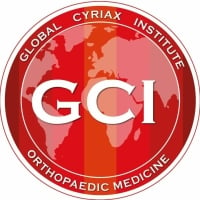Efficient carpal tunnel tests
The Most Useful Functional Tests for Carpal Tunnel Syndrome
Carpal Tunnel Syndrome (CTS) is the most common entrapment neuropathy, caused by compression of the median nerve as it passes through the carpal tunnel in the wrist. While nerve conduction studies remain the diagnostic gold standard, several functional clinical tests are highly useful in identifying CTS and guiding treatment decisions.
1. Phalen’s Test
How it's performed: The patient flexes both wrists maximally and holds the backs of the hands together for 30–60 seconds.
Positive sign: Reproduction of tingling or numbness in the median nerve distribution (thumb, index, middle, and radial side of the ring finger).
Clinical relevance: Phalen’s test is easy to perform and widely used, though sensitivity and specificity vary (approximately 68–73%).
2. Tinel’s Sign at the Wrist
How it's performed: The examiner taps over the median nerve at the wrist (volar surface just proximal to the carpal tunnel).
Positive sign: Tingling or "electric shock" sensation radiating into the median nerve territory.
Clinical relevance: Often positive in moderate to severe CTS, but less reliable in mild cases. Specificity tends to be higher than sensitivity.
3. Durkan’s Compression Test (Carpal Compression Test)
How it's performed: Direct pressure is applied over the carpal tunnel using the examiner’s thumbs for about 30 seconds.
Positive sign: Reproduction of median nerve symptoms.
Clinical relevance: Considered one of the most sensitive tests (up to 89%) for CTS. More reliable than Phalen’s or Tinel’s in many cases.
4. Hand Elevation Test
How it's performed: The patient raises both arms overhead and maintains the position for up to 2 minutes.
Positive sign: Onset of tingling or numbness in the median nerve distribution.
Clinical relevance: Useful in cases where traditional provocative tests are inconclusive; relatively high sensitivity.
5. Functional Dexterity and Grip Tests
- Grip strength testing, pinch tests, and fine motor tasks (like buttoning or picking up small objects) can highlight functional deficits.
- These are especially valuable in assessing severity and impact on daily life, particularly in chronic cases.
Conclusion
While no single test can confirm CTS on its own, a combination of Durkan’s compression test, Phalen’s test, and Tinel’s sign, along with grip and dexterity assessments, provides a strong clinical basis for diagnosis. These functional tests, when interpreted alongside patient history and symptoms, allow clinicians to identify CTS early and initiate appropriate management before irreversible nerve damage occurs.
